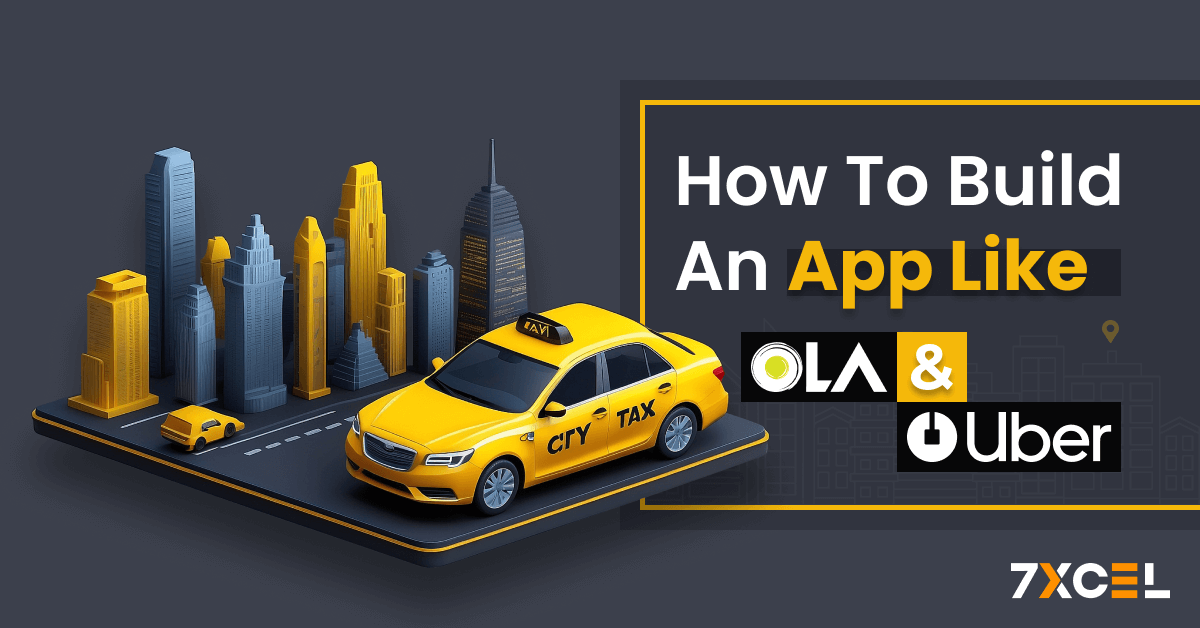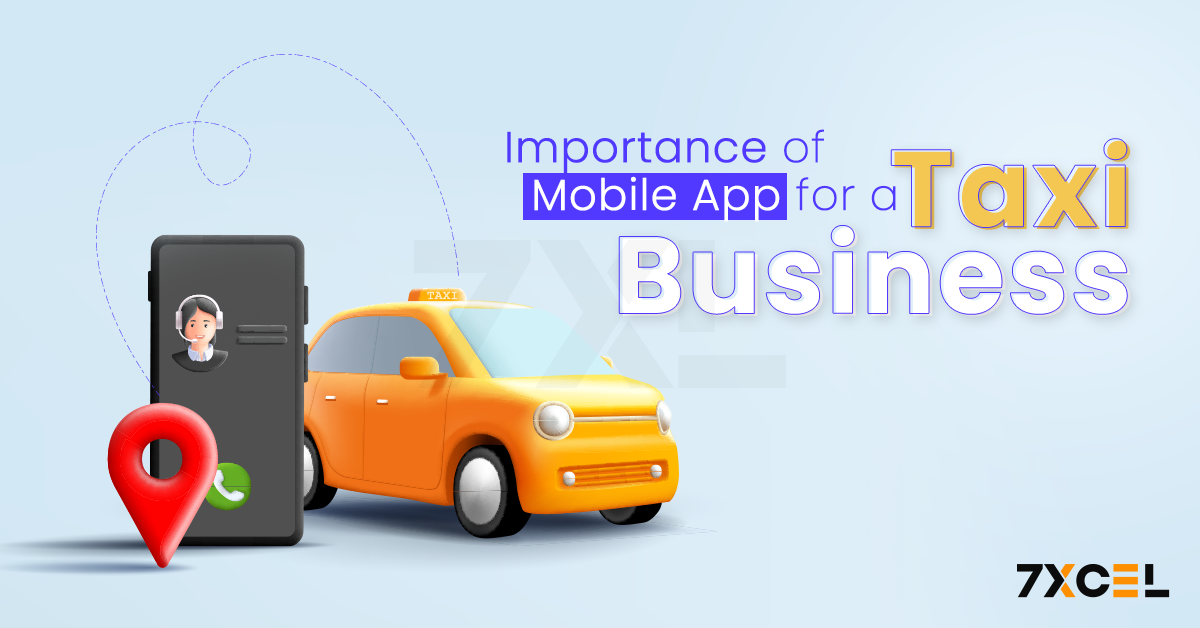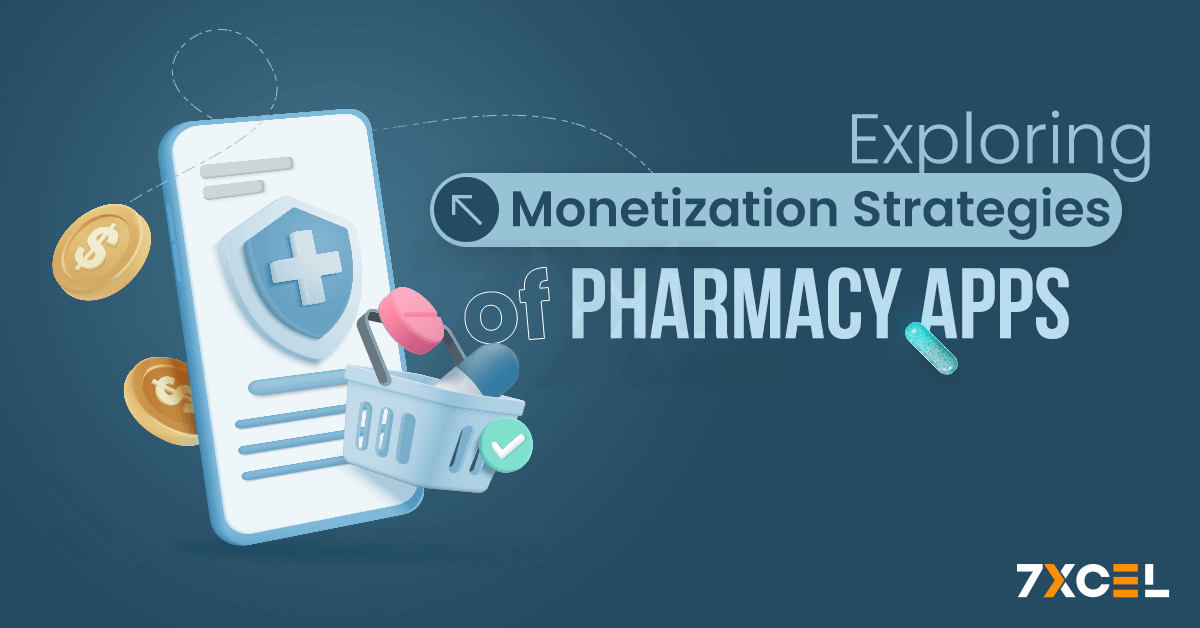Quick Summary:
Developing a fitness app like Strava involves significant planning, understanding of essential features, cost estimation, and time commitment. Key factors that affect development costs include the complexity of features, technology stack, and the team’s location. This blog offers a detailed overview of the cost, time, and features necessary to create a fitness app similar to Strava, and why selecting the right development partner is crucial for success.
In this blog, we’re going to discuss📝
- Market Overview of Fitness App
- Relevance and Potential of Fitness App Market
- Why You Should Develop an App Like Strava?
- What Are the Essential Features to Include in an App Like Strava?
- What Are the Factors Affecting the Cost to Develop an App Like Strava?
- How Long Will It Take to Develop an App Like Strava?
- Key Phases in Developing an App like Strava
- Factors That Could Accelerate or Delay Development
Fitness apps have become essential tools for those aiming to maintain a healthy lifestyle, with apps like Strava setting industry standards through features like comprehensive tracking, social connectivity, and performance analytics. According to the reports, The global fitness app market, valued at $13.78 billion in 2020, is expected to grow to $120.37 billion by 2030, at a CAGR of 24.3%.
Developing a fitness app like Strava involves understanding various costs, including feature complexity, platform choice, and integration capabilities. This guide will explore these costs, providing insights to help entrepreneurs and businesses effectively plan and create a competitive, user-friendly app that meets market demands
Market Overview of Fitness App
The fitness app market has seen rapid growth, valued at USD 1.54 billion in 2023, with an expected CAGR of 17.7% from 2024 to 2030 – According to recent reports. This expansion is driven by increasing health awareness, widespread adoption of smartphones and wearables, and growing interest in fitness among millennials and Gen Z.
The COVID-19 pandemic further accelerated this trend, as more people turned to digital solutions for fitness. Strava, with over 95 million users worldwide, exemplifies success in this market through its comprehensive tracking features, GPS integration, and strong social community, setting a high standard for future fitness apps.
Relevance and Potential of Fitness App Market
The growing fitness app market presents a promising opportunity for businesses, with significant potential for innovation and user engagement. Developing an app like Strava allows developers to tap into a large and expanding user base seeking effective fitness tools. Opportunities include integrating new technologies, enhancing social features, and offering personalized experiences. Beyond profitability, fitness apps play a crucial role in improving public health by encouraging healthy lifestyles and physical activity, ultimately fostering a more active and healthier community.
Why You Should Develop an App Like Strava?
Developing a fitness app like Strava can be a highly rewarding venture, both in terms of financial gain and the positive impact it can have on users’ health and wellness. Here’s a detailed exploration of why you should consider developing such an app:
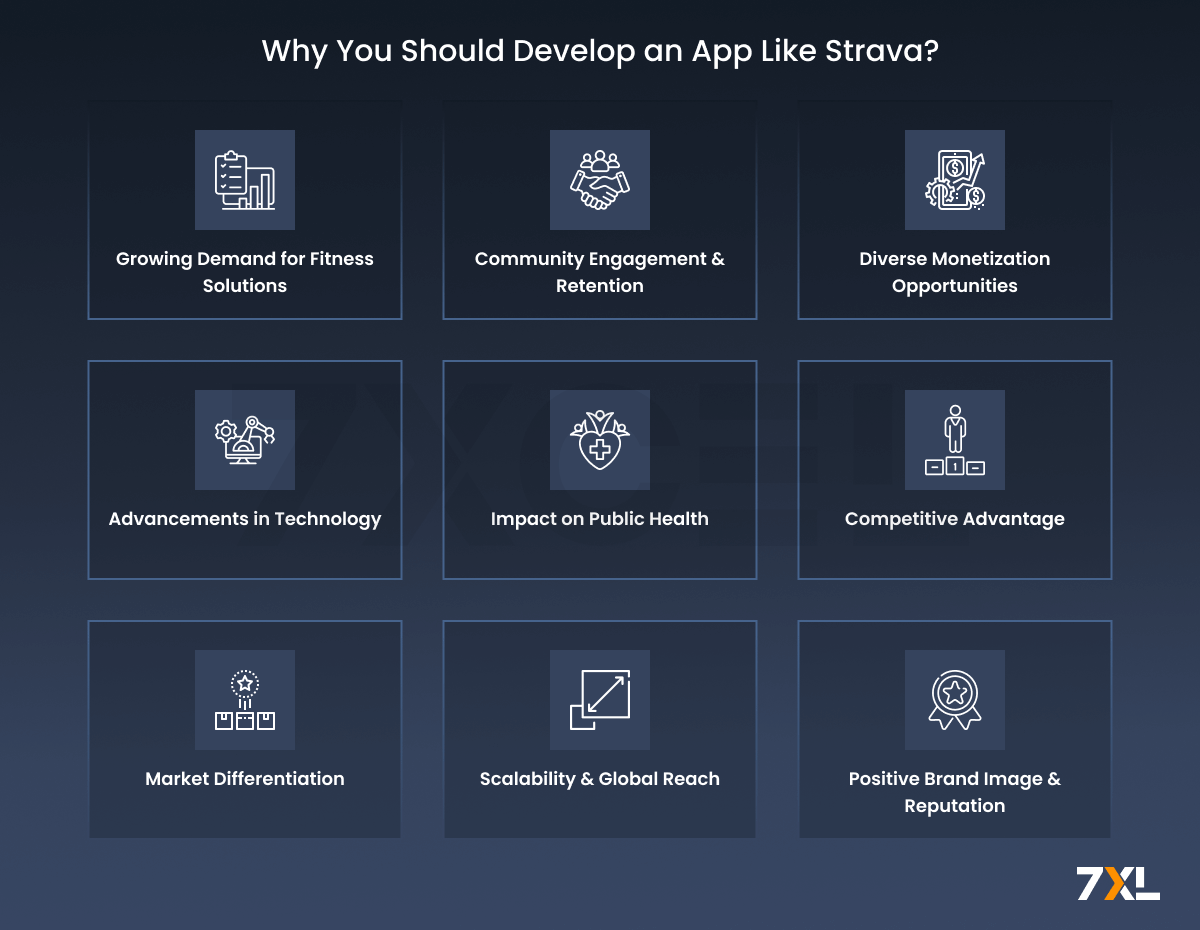
1. Growing Demand for Fitness Solutions
Market Growth and Opportunity:
The fitness app market is experiencing rapid growth, driven by an increasing awareness of health & wellness and a surge in the adoption of smartphones and wearable devices. According to market research, the global fitness app market is projected to grow significantly in the coming years, reaching over $10 billion by 2027. This growth is fueled by the desire for convenient and accessible fitness solutions that users can integrate into their daily routines.
User Base Expansion:
As people become more health-conscious, the demand for tools that help track and improve their fitness levels is growing. Fitness apps like Strava provide an all-in-one solution for tracking various activities, setting goals, and monitoring progress, making them incredibly appealing to a broad audience. By developing a fitness app, you can tap into this expanding market and reach a diverse user base eager for effective fitness tools.
2. Community Engagement and Retention
Social Features Drive Engagement:
Strava’s success is largely due to its community-centric approach, which allows users to connect, share their achievements, and participate in challenges. Social features are a powerful tool for driving user engagement and retention, as they create a sense of community and belonging. Users are more likely to stay active on the app and return frequently if they feel connected to a supportive community.
Building Loyalty:
By incorporating similar social features into your fitness app, you can foster a loyal user base. Utilizing features like leaderboards, group challenges, and activity sharing encourages users to interact with the app and one another, improving the user experience as a whole. Over time, improved user retention rates and more frequent app usage may result from this sense of community.
3. Diverse Monetization Opportunities
Subscription Models:
One of the significant advantages of developing a fitness app like Strava is the potential for diverse monetization strategies. Subscription models is where users pay a monthly or annual fee for premium features, can provide a steady revenue stream. Premium subscriptions can include advanced analytics, personalized training plans, and an ad-free experience, offering users additional value.
In-App Purchases:
In-app purchases for features like virtual coaching, custom workout plans, and exclusive content can also generate significant revenue. Users are often willing to pay for features that enhance their fitness experience and help them achieve their goals more effectively.
Advertising and Partnerships:
Fitness apps also offer opportunities for advertising and partnerships. By partnering with fitness brands, equipment manufacturers, and health services, you can create additional revenue streams through sponsored content and targeted advertising. This not only monetizes the app but also provides users with valuable resources and offers that align with their fitness interests.
4. Advancements in Technology
Integration with Wearables:
The advancements in mobile and wearable technology have opened new possibilities for fitness app development. Integrating your app with fitness wearables like smartwatches and fitness trackers allows for more accurate activity tracking and personalized insights. These technologies provide users with a seamless and enriched fitness experience, making your app more appealing.
Real-Time Tracking and Feedback:
Technological advancements enable real-time tracking and feedback, which are crucial for providing users with accurate and immediate insights into their fitness activities. Features such as GPS tracking, heart rate monitoring, and activity analysis are now more accessible and affordable to implement, allowing you to develop a comprehensive fitness app that meets the needs of today’s tech-savvy users.
5. Impact on Public Health
Encouraging Healthy Lifestyles:
Fitness apps like Strava play a vital role in promoting public health by encouraging users to adopt and maintain healthy lifestyles. By providing tools that help users set fitness goals, track their progress, and stay motivated, your app can contribute to the overall well-being of its users. This positive impact on public health not only adds value to your app but also aligns it with broader societal trends towards wellness and fitness.
Preventing Health Issues:
Regular physical activity is known to reduce the risk of various health issues, including heart disease, diabetes, and obesity. By developing a fitness app, you can help users stay active and informed about their health, potentially preventing these conditions and improving their quality of life. This social impact can make your app more attractive to health-conscious consumers and even appeal to health organizations looking to support digital wellness initiatives.
6. Competitive Advantage and Market Differentiation
Unique Features and Personalization:
Developing a fitness app allows you to create unique features and personalized experiences that differentiate your app from competitors. By offering advanced analytics, personalized training plans, and community-driven challenges, you can create a unique value proposition that attracts and retains users.
Capitalizing on Trends:
By staying ahead of fitness and technology trends, you can continuously innovate and improve your app, maintaining a competitive edge in the market. Features like virtual coaching, augmented reality for route visualization, and integration with emerging wearable technologies can set your app apart from the competition.
7. Scalability and Global Reach
Reaching a Global Audience:
Fitness is a universal interest, and developing an app like Strava allows you to reach a global audience. By incorporating multilingual support and localization features, You are able to serve users from various geographic locations and cultures, expanding your app’s reach and potential user base.
Scalability for Growth:
Fitness apps are inherently scalable, allowing you to start with a core set of features and expand as your user base grows. This scalability enables you to add new features, support more users, and enter new markets without significant changes to your underlying infrastructure.
8. Positive Brand Image and Reputation
Promoting Wellness:
Developing a fitness app can enhance your brand image by associating it with health, wellness, and positive lifestyle choices. Users are likely to view your app as a valuable tool for improving their fitness and well-being, which can translate into increased brand loyalty and positive word-of-mouth.
Corporate Social Responsibility:
By contributing to public health and wellness, your app can also enhance your company’s corporate social responsibility profile. Supporting fitness and healthy living can improve your company’s reputation and attract customers who value businesses that prioritize social good.
What Are the Essential Features to Include in an App Like Strava?
Developing a fitness app like Strava involves integrating various features that enhance user experience, provide valuable fitness tracking, and foster community engagement. Here’s a detailed look at the essential features that should be included, along with their estimated cost to develop fitness app like strava:
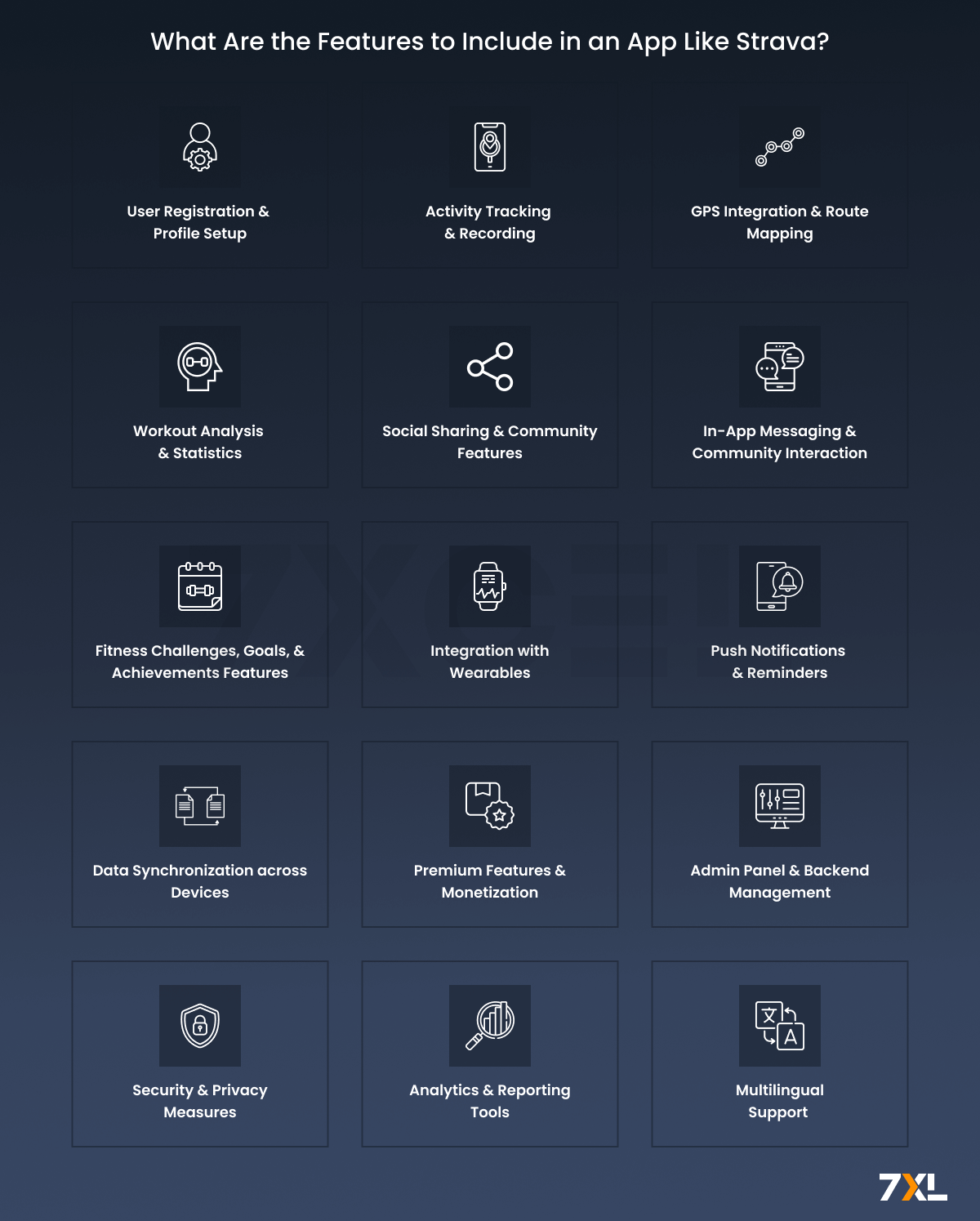
1. User Registration and Profile Setup
- Description: Enables users to sign up using email or social media accounts and create profiles with personal information, fitness goals, and preferences.
- Importance: Facilitates personalized user experience and allows tracking of individual fitness progress.
- Estimated Cost: $2,000 – $5,000
- Functionality:
- Email and social media sign-up options.
- Profile fields for personal details (name, age, weight, etc.).
- Customizable fitness goals and preferences.
- Profile picture upload and editing options.
2. Activity Tracking and Recording
- Description: Provides real-time tracking of various activities such as running, cycling, swimming, and more, using GPS and motion sensors to provide accurate data on distance, speed, duration, and other metrics.
- Importance: Core functionality that allows users to monitor their workouts, analyze their performance, and achieve their fitness goals.
- Estimated Cost: $10,000 – $25,000
- Functionality:
- Real-time tracking for multiple activities.
- GPS integration for outdoor activities.
- Recording metrics like distance, speed, duration, and calories burned.
- Support for manual entry of activities.
3. GPS Integration and Route Mapping
- Description: Uses GPS to track and map routes, distances, and speed for outdoor activities, and provides real-time feedback.
- Importance: Essential for route planning and analysis, enabling users to review their performance and improve.
- Estimated Cost: $5,000 – $12,000
- Functionality:
- Real-time GPS tracking and route mapping.
- Features for planning and saving routes.
- Analysis of elevation changes and terrain.
- Ability to share routes with friends or the community.
4. Workout Analysis and Statistics
- Description: Provides detailed analytics on workout performance, including metrics such as pace, distance, elevation gain, heart rate (if integrated with wearables), and calories burned.
- Importance: Helps users understand their performance and progress, set realistic goals, and make informed decisions about their training.
- Estimated Cost: $7,000 – $15,000
- Functionality:
- Comprehensive workout summaries and statistics.
- Graphs and charts for visualizing performance over time.
- Comparison of past workouts to track improvement.
- Integration with wearables for heart rate and other biometrics.
5. Social Sharing and Community Features
- Description: Allows users to share their workouts on social media platforms and connect with a community of fitness enthusiasts.
- Importance: Enhances user engagement and motivation through social interaction and community support.
- Estimated Cost: $6,000 – $10,000
- Functionality:
- Options to share workouts on Facebook, Instagram, and Twitter.
- Community features for following friends and joining groups.
- Challenges and leaderboards to encourage competition.
- Commenting and liking on community posts.
6. In-App Messaging and Community Interaction
- Description: Facilitates communication between users for sharing tips, motivation, and fitness advice. The app should include features for private messaging, group chats, and forums.
- Importance: Communication features enhance user interaction and create a supportive environment where users can share their experiences and get advice.
- Estimated Cost: $3,000 – $6,000
- Functionality:
- Private messaging between users.
- Group chat options for fitness groups or teams.
- Discussion forums for sharing tips and advice.
- Notification alerts for new messages and interactions.
7. Challenges, Goals, and Achievements
- Description: Enables users to participate in fitness challenges, set personal goals, and earn badges or rewards for completing milestones.
- Importance: Challenges and achievements provide users with motivation and a sense of accomplishment, helping them stay committed to their fitness routines.
- Estimated Cost: $4,000 – $8,000
- Functionality:
- Options for setting personal fitness goals.
- Regular challenges and competitions with rewards.
- Achievement badges for reaching milestones.
- Leaderboards to track progress against others.
8. Integration with Wearables
- Description: Supports integration with fitness wearables like smartwatches and fitness trackers for enhanced activity monitoring and personalized fitness insights.
- Importance: Provides comprehensive fitness tracking and personalized insights, improving the overall user experience.
- Estimated Cost: $8,000 – $15,000
- Functionality:
- Compatibility with major fitness wearables.
- Real-time data synchronization from devices.
- Monitoring of metrics like heart rate, steps, and sleep.
- Access to wearable-specific features and insights.
9. Push Notifications and Reminders
- Description: Sends reminders, motivational messages, and updates to keep users engaged and on track with their fitness goals.
- Importance: Push notifications help maintain user engagement by providing timely reminders and motivational messages, encouraging users to stay active and regularly use the app.
- Estimated Cost: $2,000 – $4,000
- Functionality:
- Alerts for new challenges and activities.
- Reminders for scheduled workouts and goals.
- Motivational messages and tips.
- Customizable notification settings.
10. Data Synchronization across Devices
- Description: Ensures that user data is synchronized across multiple devices for a seamless experience, allowing users to access their fitness data from any device, including smartphone, tablets, and desktops.
- Importance: Data synchronization enhances convenience and usability, allowing users to switch between devices without losing their progress or data.
- Estimated Cost: $4,000 – $7,000
- Functionality:
- Synchronization of data across mobile, tablet, and web.
- Cloud storage for secure data access.
- Real-time updates and data backup.
- Options to export and share data.
11. Premium Features and Monetization
- Description: Offering premium features such as advanced analytics, personalized training plans, and an ad-free experience can create additional value for users and generate revenue. The app should include options for in-app purchases and subscription models.
- Importance: Monetization through premium features provides a sustainable revenue stream while offering users enhanced functionality and a more personalized experience.
- Estimated Cost: $5,000 – $12,000
- Functionality:
- Subscription plans for premium access.
- In-app purchases for additional features and content.
- Exclusive features like custom workout plans and advanced metrics.
- Ad-free experience for premium users.
12. Admin Panel and Backend Management
- Description: An admin panel is essential for managing user data, content moderation, and app performance. The backend system should support efficient data handling and provide tools for monitoring and analyzing app usage.
- Importance: An admin panel enables efficient management of app operations, ensuring that the app runs smoothly and securely.
- Estimated Cost: $6,000 – $10,000
- Functionality:
- User data management and analytics.
- Content moderation tools.
- Performance monitoring and reporting.
- Administrative controls and settings.
13. Security and Privacy Measures
- Description: Robust security measures are necessary to protect user data and ensure compliance with regulations such as GDPR and CCPA. The app should implement data encryption, secure authentication, and privacy controls.
- Importance: Ensuring data security and user privacy is crucial for building trust and maintaining the integrity of the app.
- Estimated Cost: $4,000 – $8,000
- Functionality:
- Data encryption and secure storage.
- Multi-factor authentication for user accounts.
- Privacy settings and controls.
- Compliance with data protection regulations.
14. Analytics and Reporting Tools
- Description: Analytics and reporting tools provide insights into user engagement, app performance, and revenue metrics. The app should include features for tracking key metrics and generating reports for informed decision-making.
- Importance: Analytics tools help in understanding user behavior and identifying trends, which are essential for continuous app improvement and strategic planning.
- Estimated Cost: $3,000 – $5,000
- Functionality:
- User engagement and behavior tracking.
- Performance metrics and analytics.
- Revenue tracking and reporting.
- Customizable dashboards and reports.
15. Multilingual Support
- Description: Supporting multiple languages is crucial for catering to a global audience. The app should offer language options and localized content to make it accessible to users from different regions.
- Importance: Multilingual support broadens the app’s reach, making it accessible to a diverse user base, increasing its global appeal and user engagement.
- Estimated Cost: $2,500 – $5,000
- Functionality:
- Language selection and localization.
- Support for multiple languages.
- Translated content and interfaces.
- Localization for regional preferences.
Summary of Estimated Costs
| Feature | Estimated Cost (USD) |
| User Registration and Profile Setup | $2,000 – $5,000 |
| Activity Tracking and Recording | $10,000 – $25,000 |
| GPS Integration and Route Mapping | $5,000 – $12,000 |
| Workout Analysis and Statistics | $7,000 – $15,000 |
| Social Sharing and Community Features | $6,000 – $10,000 |
| In-App Messaging and Community Interaction | $3,000 – $6,000 |
| Challenges, Goals, and Achievements | $4,000 – $8,000 |
| Integration with Wearables | $8,000 – $15,000 |
| Push Notifications and Reminders | $2,000 – $4,000 |
| Data Synchronization Across Devices | $4,000 – $7,000 |
| Premium Features and Monetization | $5,000 – $12,000 |
| Admin Panel and Backend Management | $6,000 – $10,000 |
| Security and Privacy Measures | $4,000 – $8,000 |
| Analytics and Reporting Tools | $3,000 – $5,000 |
| Multilingual Support | $2,500 – $5,000 |
Total Estimated Cost for Core Features: $71,500 – $152,000
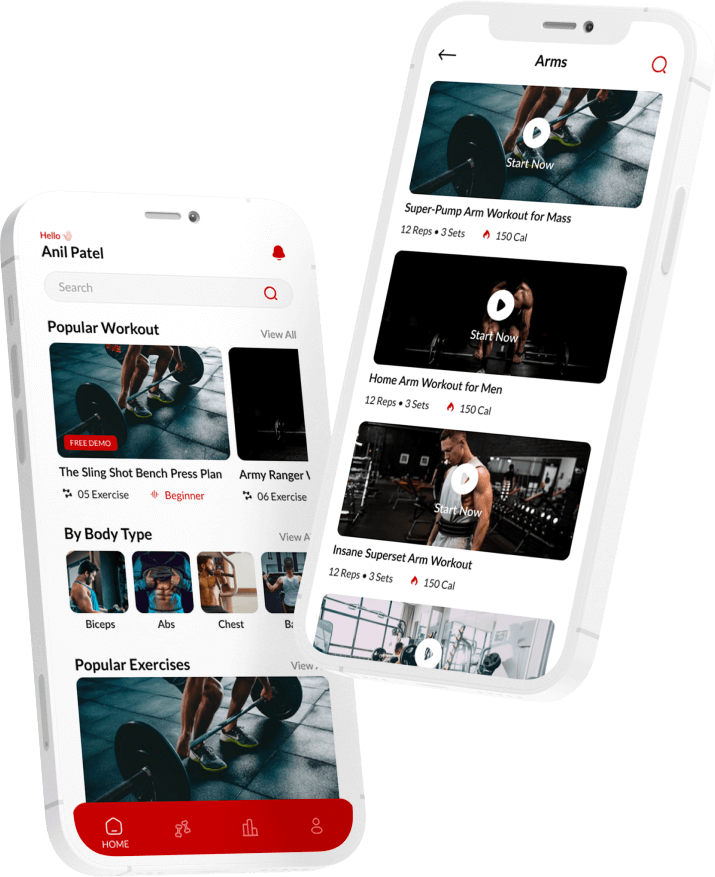
Interested to develop a standout Fitness App?
Leverage our expertise in providing top-tier digital solutions to develop your fitness app.
What Are the Factors Affecting the Cost to Develop an App Like Strava?
Cost to develope a fitness app like Strava involves various factors that significantly influence the overall budget. Strava is renowned for its feature-rich platform that caters to athletes and fitness enthusiasts by providing advanced tracking, social interaction, and performance analysis.
To create a similar app, it’s essential to consider several cost-driving elements, ranging from feature complexity to platform choice and technology integration. This section explores these factors in detail, helping you understand the cost implications and plan your budget effectively.
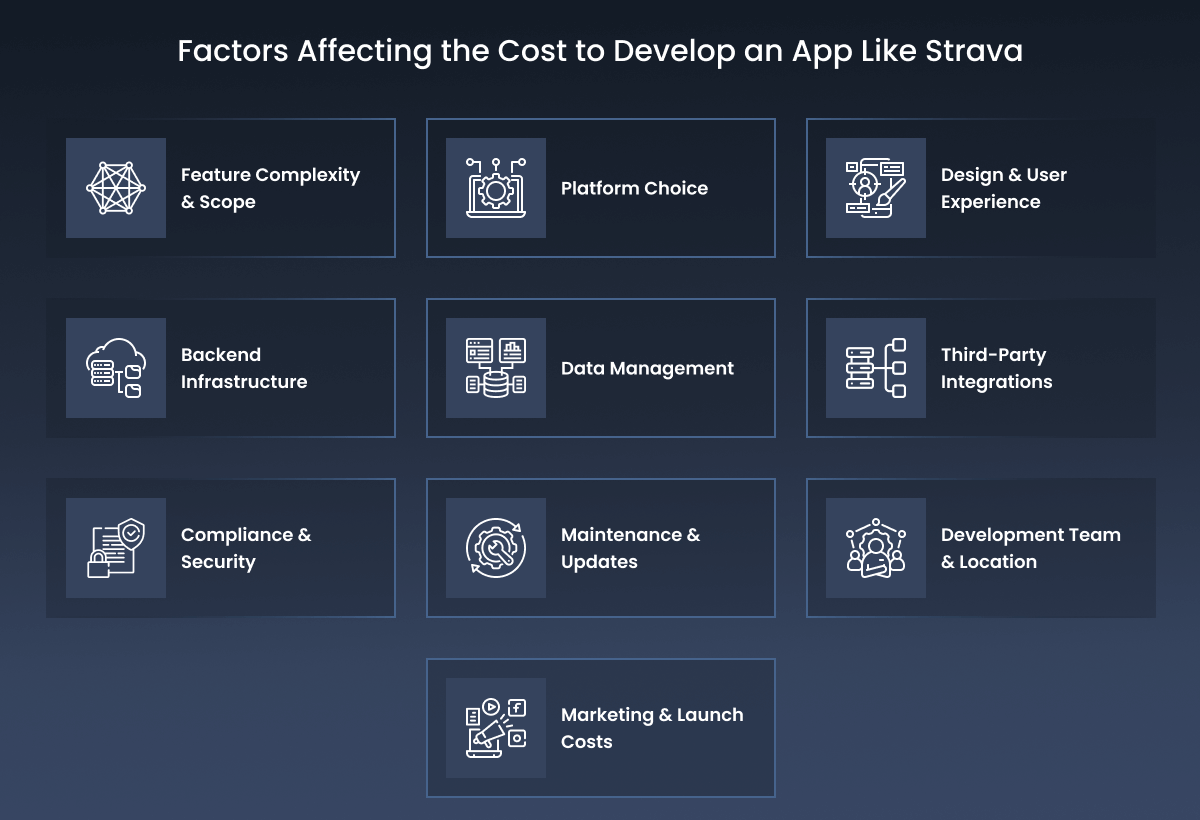
1. Feature Complexity and Scope
Overview: The range and complexity of features are primary determinants of development cost. Apps like Strava include a variety of functionalities, such as activity tracking, social networking, and performance analytics, each requiring different levels of development effort.
Cost Implication:
- Basic features such as user registration and activity tracking are relatively cost-effective to develop.
- Advanced features, including real-time GPS tracking, social interaction, and detailed performance analytics, require more time and resources, increasing overall costs.
Estimated Cost Impact:
- Basic Features: $20,000 – $50,000
- Advanced Features: $50,000 – $150,000
Detailed Cost Breakdown:
- User Registration and Profiles: $2,000 – $4,000
- Activity Tracking (GPS Integration): $10,000 – $20,000
- Performance Analytics: $10,000 – $25,000
- Social Features (Feed, Sharing): $8,000 – $15,000
- Advanced Metrics (Heart Rate, Elevation): $10,000 – $20,000
- Integration with Wearables: $10,000 – $30,000
2. Platform Choice
Overview: The choice of platform—whether iOS, Android, or both—significantly influences development costs. Developing for multiple platforms increases the complexity and time required for development but also broadens the potential user base.
Cost Implication:
- Developing a native app for a single platform (iOS or Android) is more cost-effective but limits reach.
- Cross-platform development increases the initial investment but ensures wider accessibility and potential revenue from multiple user bases.
Estimated Cost Impact:
- Single Platform (iOS or Android): $15,000 – $30,000
- Cross-Platform: $25,000 – $50,000
Detailed Cost Breakdown:
- iOS Development: $15,000 – $25,000
- Android Development: $15,000 – $25,000
- Cross-Platform (React Native/Flutter): $25,000 – $50,000
3. Design and User Experience (UX)
Overview: A high-quality, user-friendly design is crucial for ensuring a seamless and engaging user experience. Custom UI/UX designs that cater to the needs of fitness enthusiasts add to the development cost but are essential for user retention and satisfaction.
Cost Implication:
- Investing in a unique and intuitive UI/UX design increases upfront costs but provides a competitive edge in the market.
- Basic design elements are less costly but may not deliver the desired user engagement and retention.
Estimated Cost Impact:
- Basic Design: $5,000 – $10,000
- Custom UI/UX Design: $10,000 – $30,000
Detailed Cost Breakdown:
- Basic UI Elements: $3,000 – $5,000
- Custom UX Flows: $5,000 – $10,000
- User Testing and Feedback Integration: $2,000 – $5,000
4. Backend Infrastructure and Data Management
Overview: A robust backend is essential for managing user data, tracking activities, and providing real-time updates. The complexity of data management, storage, and processing significantly affects development costs.
Cost Implication:
- Developing a scalable and secure backend infrastructure adds to the initial development costs but is critical for handling large volumes of data and user interactions.
- Integrating third-party services for cloud storage and data processing can also add to the costs.
Estimated Cost Impact:
- Basic Backend Infrastructure: $10,000 – $20,000
- Advanced Data Management and Integration: $20,000 – $50,000
Detailed Cost Breakdown:
- Database Setup: $5,000 – $10,000
- API Development and Integration: $5,000 – $15,000
- Real-Time Data Processing: $10,000 – $25,000
5. Third-Party Integrations
Overview: Integrating with third-party services, such as GPS for tracking, social media for sharing, and payment gateways for subscriptions, adds functionality to the app but also increases development costs.
Cost Implication:
- The cost of integration varies depending on the service provider and the complexity of integration.
- Using third-party APIs can reduce development time but involves ongoing costs for usage and maintenance.
Estimated Cost Impact:
- Basic Integrations: $5,000 – $10,000
- Advanced Integrations (Multiple APIs): $15,000 – $30,000
Detailed Cost Breakdown:
- GPS Integration: $5,000 – $10,000
- Payment Gateway Integration: $3,000 – $5,000
- Social Media Integration: $2,000 – $5,000
Cost of Common Third-Party API Integrations:
- Google Maps API (Geolocation): $1,000 – $3,000
- Strava API (Fitness Data): $2,000 – $5,000
- Twilio API (Communication): $1,500 – $3,000
- Stripe API (Payments): $2,000 – $4,000
6. Compliance and Security
Overview: Ensuring compliance with data protection regulations and implementing robust security measures is essential for protecting user data and maintaining trust. This includes encryption, secure data storage, and adherence to standards such as GDPR.
Cost Implication:
- Implementing security measures and ensuring regulatory compliance adds to development costs but is crucial for protecting sensitive user information and avoiding legal issues.
Estimated Cost Impact:
- Basic Security Measures: $5,000 – $10,000
- Comprehensive Compliance and Security: $10,000 – $20,000
Detailed Cost Breakdown:
- Data Encryption: $3,000 – $6,000
- Compliance with Regulations: $5,000 – $10,000
- Secure Data Storage Solutions: $2,000 – $4,000
7. Maintenance and Updates
Overview: Ongoing maintenance and regular updates are necessary to keep the app functional, address bugs, and add new features. Maintenance includes fixing bugs, updating software, and ensuring compatibility with new devices and operating systems.
Cost Implication:
- Regular updates and maintenance are necessary to keep the app competitive and secure, involving recurring costs.
Estimated Cost Impact:
- Basic Maintenance: $10,000 – $20,000 per year
- Comprehensive Maintenance and Updates: $20,000 – $40,000 per year
Detailed Cost Breakdown:
- Bug Fixes and Updates: $5,000 – $10,000 per year
- Feature Enhancements: $5,000 – $15,000 per year
- Compatibility Checks: $2,000 – $5,000 per year
8. Development Team and Location
Overview: The cost of hiring a development team varies significantly based on their location, expertise, and the complexity of the project. Hiring experienced developers from regions with lower labor costs can significantly reduce expenses.
Cost Implication:
- Hiring a local development team in high-cost regions like North America or Western Europe is more expensive compared to outsourcing to regions like Eastern Europe or Asia.
Estimated Cost Impact:
- Local Development Team (High-Cost Regions): $100,000 – $200,000
- Offshore Development Team (Lower-Cost Regions): $50,000 – $100,000
Detailed Cost Breakdown:
- Local Development Costs: $100 – $150 per hour
- Offshore Development Costs: $30 – $70 per hour
9. Marketing and Launch Costs
Overview: Marketing and launch efforts are critical for attracting and retaining users. These costs include promotional campaigns, social media marketing, app store optimization, and initial launch events.
Cost Implication:
- Effective marketing strategies are necessary to create brand awareness and attract users, involving significant upfront investment.
Estimated Cost Impact:
- Basic Marketing Efforts: $5,000 – $10,000
- Comprehensive Marketing Campaigns: $20,000 – $50,000
Detailed Cost Breakdown:
- Social Media Marketing: $3,000 – $10,000
- App Store Optimization (ASO): $2,000 – $5,000
- Influencer Partnerships: $5,000 – $15,000
- Launch Events and Promotions: $10,000 – $20,000
Summary of Factors and Costs
Understanding these factors helps in effectively planning and managing the budget for developing an app like Strava. Partnering with a specialized Fitness App Development Company can help you build a feature-rich and cost-effective platform.
These experts can guide you through choosing the right technology stack, integrating advanced features like GPS tracking and personalized workout plans, and ensuring a seamless user experience. Here’s a consolidated overview of the estimated costs based on the various factors:
| Factor | Description | Estimated Cost |
| Feature Complexity and Scope | Basic to advanced features development | $20,000 – $150,000 |
| Platform Choice | Single or cross-platform development | $15,000 – $50,000 |
| Design and User Experience (UX) | Custom UI/UX design for enhanced user experience | $5,000 – $30,000 |
| Backend Infrastructure | Scalable backend and data management | $10,000 – $50,000 |
| Third-Party Integrations | Integration with GPS, social media, and payment gateways | $5,000 – $30,000 |
| Compliance and Security | Data protection measures and regulatory compliance | $5,000 – $20,000 |
| Maintenance and Updates | Ongoing maintenance and feature updates | $10,000 – $40,000 |
| Development Team and Location | Costs vary based on team location and expertise | $50,000 – $200,000 |
| Marketing and Launch Costs | Promotional campaigns and launch efforts | $5,000 – $50,000 |
Total Estimated Cost for Developing an App Like Strava: $125,000 – $620,000
Understanding these cost factors and their implications helps in effectively planning the development of a competitive, user-friendly fitness app like Strava, ensuring that you invest in the right areas to maximize returns and user engagement.
How Long Will It Take to Develop an App Like Strava?
Developing an app like Strava is a complex and multi-faceted project that requires meticulous planning, design, development, testing, and deployment. The timeline for developing such an app depends on various factors, including the complexity of features, the platform choice, and the expertise of the development team.
Below, we’ll break down the typical phases involved in developing an app like Strava and provide an estimated timeframe for each stage, giving you a comprehensive overview of the entire development process.

Key Phases in Developing an App like Strava
Developing an app like Strava involves distinct phases: discovery and planning, design, development, testing, deployment, and maintenance. Each phase is crucial for creating a robust, user-friendly app, ensuring seamless functionality and a successful launch.
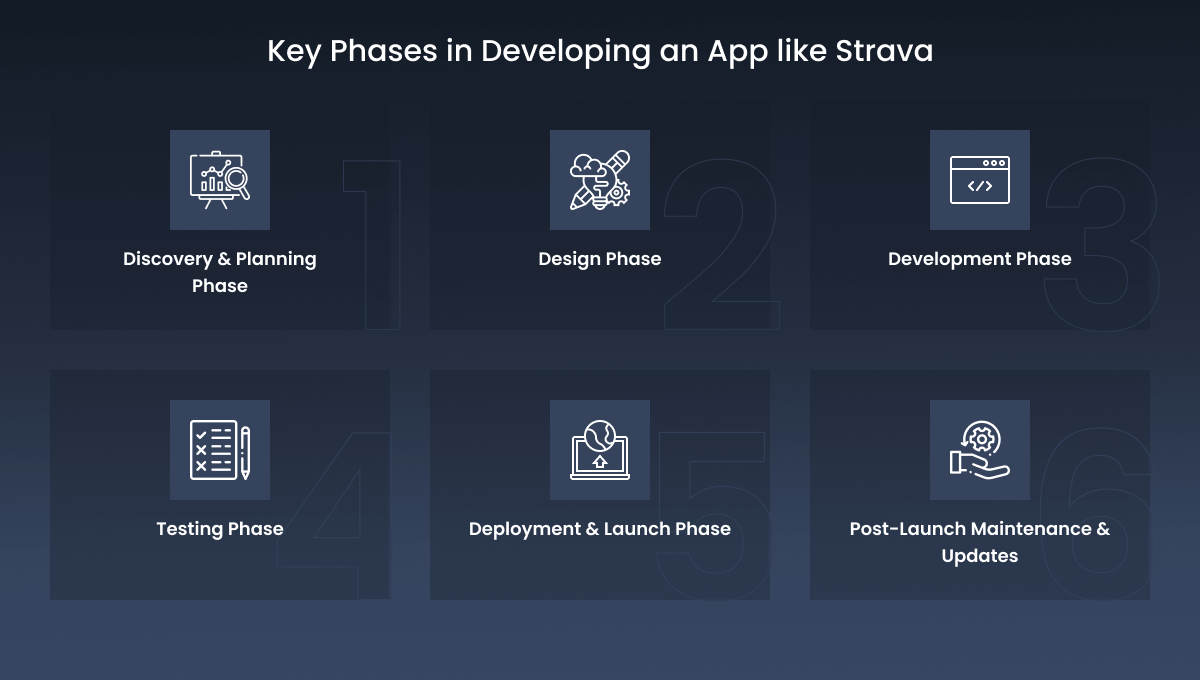
1. Discovery and Planning Phase
Overview: This initial phase involves understanding the project scope, identifying the key features and functionalities, and creating a detailed project plan. It includes market research, competitor analysis, defining the app’s goals, and developing a project roadmap.
Key Activities:
- Market Research: Analyze market trends and competitor apps.
- Requirement Gathering: Define the app’s purpose, target audience, and key features.
- Project Planning: Create a detailed project plan with timelines and milestones.
- Budget Estimation: Develop a preliminary budget based on feature requirements.
Estimated Timeframe: 2-4 weeks
Factors Influencing Timeline:
- The complexity of market research and analysis.
- The number of stakeholders involved in requirement gathering.
- The depth of project planning and budget estimation.
2. Design Phase
Overview: In this phase, the focus is on designing the user interface (UI) and user experience (UX). It involves creating wireframes, mockups, and prototypes to visualize the app’s layout and interactions. The design phase ensures that the app is intuitive, visually appealing, and user-friendly.
Key Activities:
- Wireframing: Create basic layout sketches for each screen.
- Mockups: Develop detailed mockups with design elements like colors, fonts, and icons.
- Prototyping: Build interactive prototypes to simulate user interactions.
- User Feedback: Gather feedback from potential users and stakeholders to refine designs.
Estimated Timeframe: 4-6 weeks
Factors Influencing Timeline:
- The number of screens and design complexity.
- The level of detail required in mockups and prototypes.
- The feedback and iteration cycle for design refinements.
3. Development Phase
Overview: The development phase is where the actual coding of the app takes place. It involves frontend and backend development, integrating APIs, and building the core functionalities. This phase requires close collaboration between developers, designers, and project managers to ensure that the app meets the specified requirements.
Key Activities:
- Frontend Development: Develop the user-facing side of the app with a focus on UI and UX.
- Backend Development: Build the server-side infrastructure to handle data storage, user authentication, and business logic.
- API Integration: Integrate third-party APIs for features like GPS tracking, payment processing, and social media sharing.
- Feature Implementation: Develop core functionalities such as activity tracking, social networking, and performance analytics.
Estimated Timeframe: 16-24 weeks
Factors Influencing Timeline:
- The complexity and number of features.
- The choice of platform (iOS, Android, or cross-platform).
- The integration of third-party services and APIs.
- The efficiency and size of the development team.
Detailed Development Tasks:
- User Registration and Authentication: 2-3 weeks
- GPS and Activity Tracking: 4-6 weeks
- Performance Analytics and Reporting: 4-5 weeks
- Social Networking Features: 3-4 weeks
- Backend Infrastructure: 3-6 weeks
- API Integration: 2-4 weeks
4. Testing Phase
Overview: The testing phase involves thoroughly evaluating the app to identify and fix bugs, ensure functionality, and verify that the app meets the defined requirements. This phase includes various testing methods such as functional testing, performance testing, security testing, and user acceptance testing.
Key Activities:
- Functional Testing: Verify that each feature works as intended.
- Performance Testing: Assess the app’s performance under different conditions, including load and stress testing.
- Security Testing: Ensure that user data is secure and the app complies with privacy regulations.
- User Acceptance Testing (UAT): Conduct testing with real users to gather feedback and identify any usability issues.
Estimated Timeframe: 4-6 weeks
Factors Influencing Timeline:
- The number of features and the complexity of the app.
- The thoroughness of the testing process.
- The time required for fixing bugs and issues identified during testing.
5. Deployment and Launch Phase
Overview: The deployment phase involves preparing the app for release, including setting up the app store listings, creating marketing materials, and launching the app to the public. This phase also includes post-launch activities such as monitoring performance, gathering user feedback, and planning for future updates.
Key Activities:
- App Store Preparation: Create app store listings with descriptions, screenshots, and promotional materials.
- Deployment: Submit the app to the Apple App Store and Google Play Store for review and release.
- Marketing and Promotion: Develop a marketing strategy to promote the app and attract users.
- Post-Launch Monitoring: Monitor app performance and user feedback to identify areas for improvement.
Estimated Timeframe: 2-4 weeks
Factors Influencing Timeline:
- The requirements and review process of the app stores.
- The effectiveness of the marketing and promotion strategy.
- The responsiveness to user feedback and performance monitoring.
6. Post-Launch Maintenance and Updates
Overview: After the initial launch, ongoing maintenance and updates are necessary to ensure that the app remains functional, secure, and up-to-date. This phase includes fixing bugs, adding new features, and updating the app to stay compatible with new devices and operating systems.
Key Activities:
- Bug Fixes: Address any issues or bugs reported by users.
- Feature Enhancements: Add new features and improvements based on user feedback.
- Security Updates: Ensure the app is secure and compliant with the latest regulations.
- Compatibility Updates: Update the app to remain compatible with new devices and operating systems.
Estimated Timeframe: Ongoing (typically involves regular updates every 4-8 weeks)
Factors Influencing Timeline:
- The frequency and complexity of updates.
- The responsiveness to user feedback and market trends.
- The availability of resources for continuous development.
Overall Estimated Timeline
Here’s a consolidated overview of the estimated timeline for each phase in developing an app like Strava:
| Phase | Estimated Timeframe |
| Discovery and Planning | 2-4 weeks |
| Design | 4-6 weeks |
| Development | 16-24 weeks |
| Testing | 4-6 weeks |
| Deployment and Launch | 2-4 weeks |
| Post-Launch Maintenance and Updates | Ongoing |
Total Estimated Time: 28-44 weeks (6-10 months)
Factors That Could Accelerate or Delay Development
Factors like development team expertise, feature complexity, and third-party integrations can accelerate or delay the development of an app like Strava. Understanding these elements helps in planning effectively and ensuring a timely, successful app launch.
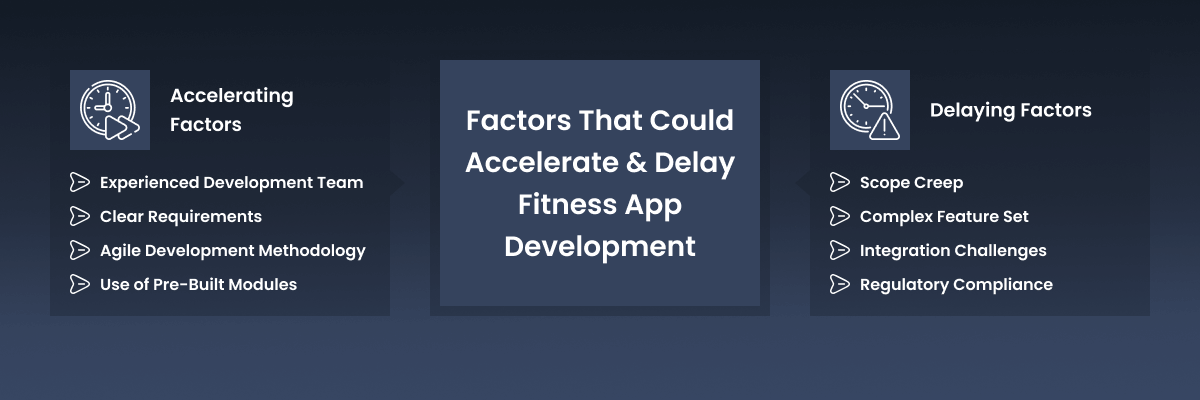
Accelerating Factors
- Experienced Development Team: A team with experience in developing fitness apps can expedite the development process.
- Clear Requirements: Well-defined project requirements and scope reduce the time spent on revisions and clarifications.
- Agile Development Methodology: Iterative development with continuous feedback and improvements speeds up the project timeline.
- Use of Pre-Built Modules: Leveraging pre-built modules and frameworks can significantly reduce development time for standard features.
Delaying Factors
- Scope Creep: Changes in project scope or requirements during development can lead to delays.
- Complex Feature Set: Developing advanced features like real-time GPS tracking and performance analytics may require additional time.
- Integration Challenges: Integrating with third-party services and APIs can introduce unforeseen complications and delays.
- Regulatory Compliance: Ensuring compliance with data protection and privacy regulations can add time to the development process.
Conclusion
Developing an app like Strava is a complex process that requires careful planning and execution across various phases. The overall timeline can range from 6 to 10 months, depending on the complexity of the features and the efficiency of the development team.
By understanding the key phases and factors that influence development time, you can better plan your project and ensure a successful app launch. Whether you’re building an app from scratch or enhancing an existing platform, having a clear roadmap and realistic timeline is crucial for achieving your goals.

